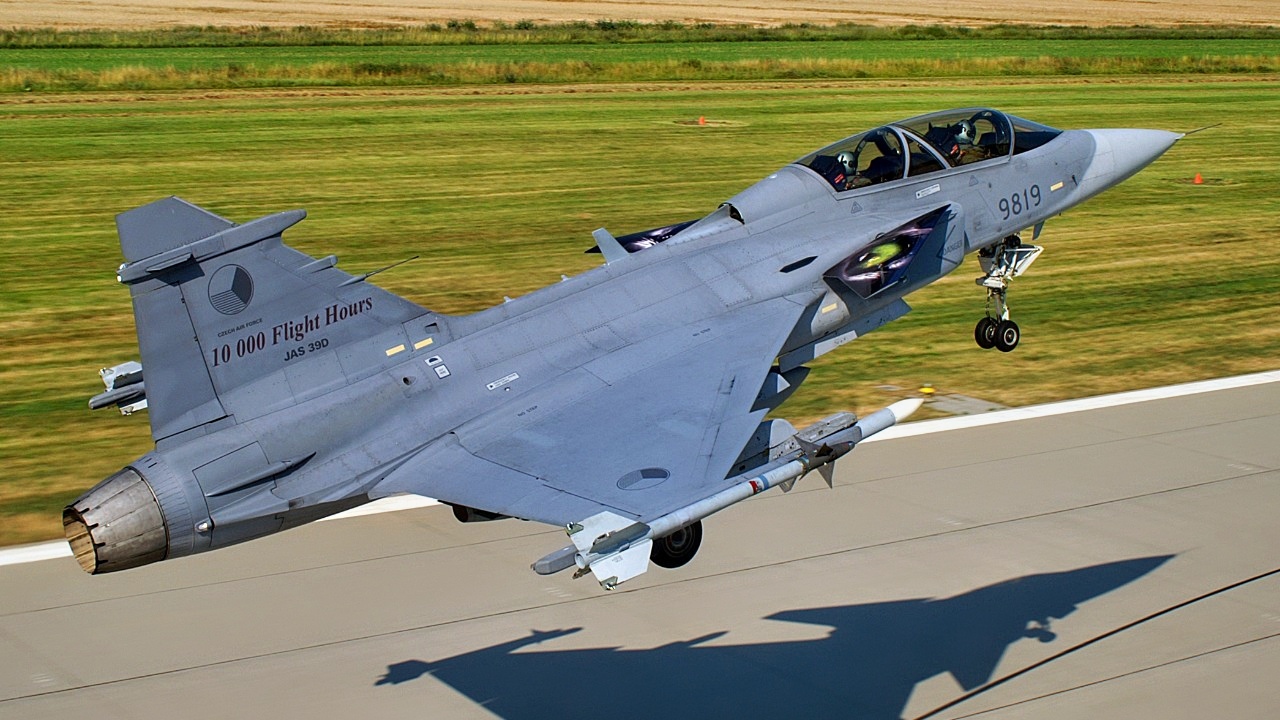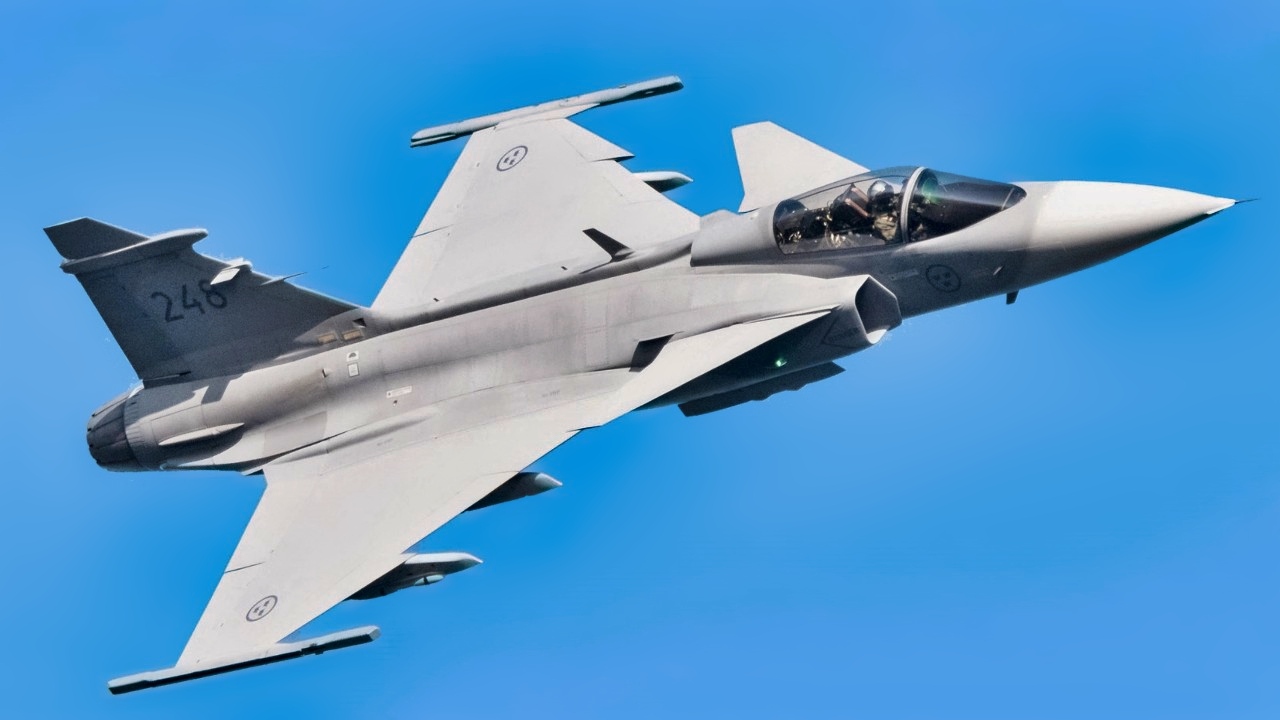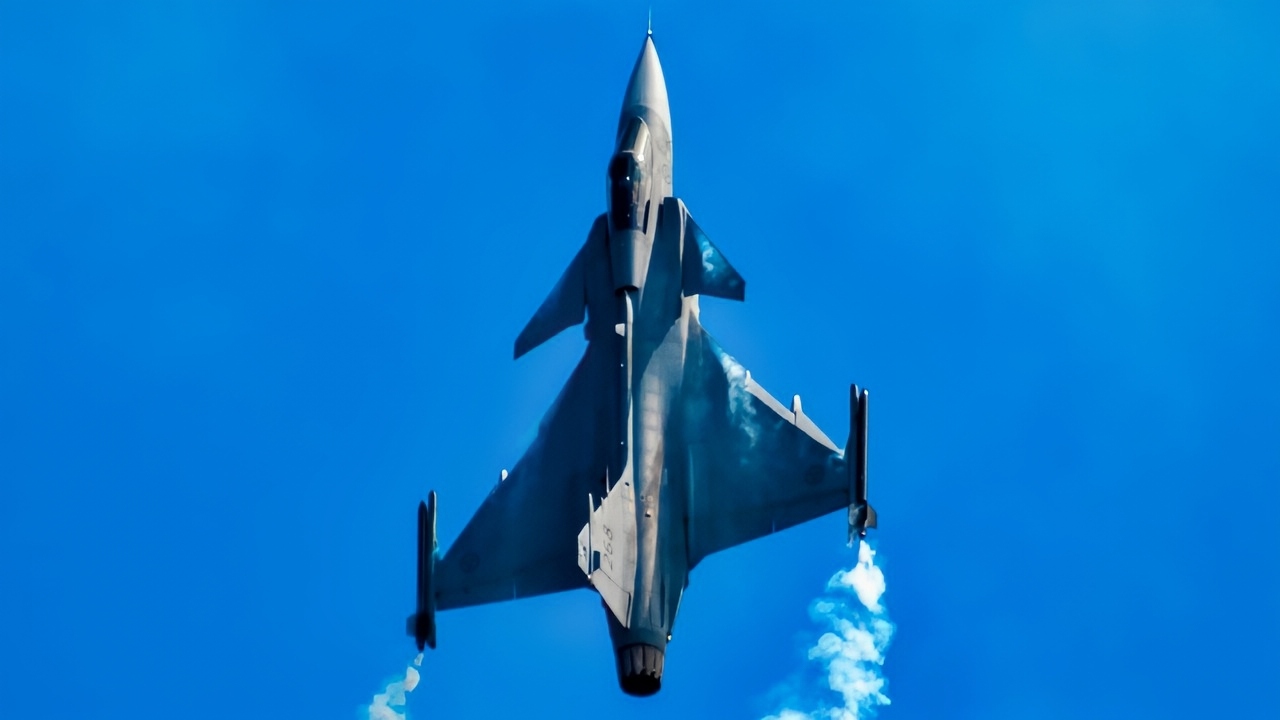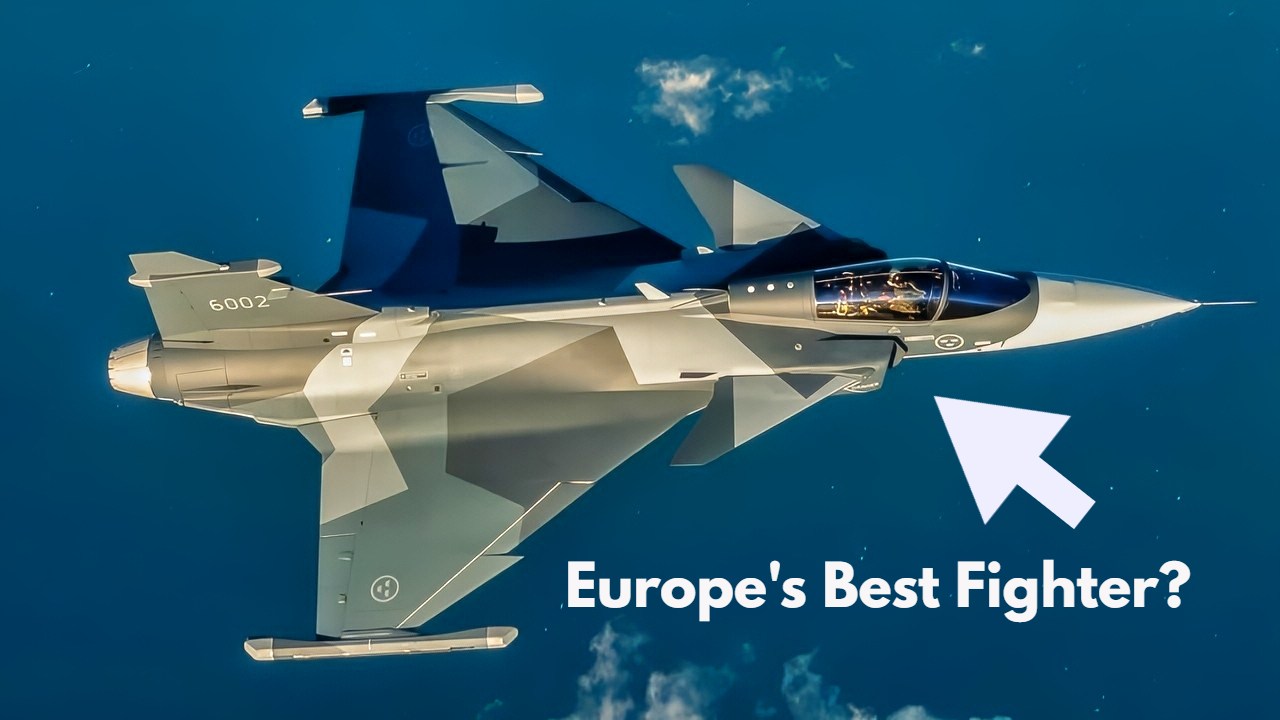Key Points and Summary – In May 2025, Saab’s JAS 39 Gripen E flew with “Centaur,” an embedded AI agent, conducting beyond-visual-range engagements and EW tasks—an operational first.
-Project Beyond, with Helsing, exploits the jet’s open architecture, Raven AESA, Skyward-G IRST, Arexis EW, Meteor integration, and wide-area cockpit to enable man-machine teaming.

JAS 39 Gripen. Image Credit: Creative Commons.

JAS 39 Gripen Fighter from Back in 2017. Image Credit: Creative Commons.
-Gripen E’s F414 engine, added fuel, and lower operating costs target nations seeking sovereignty and high sortie rates.
-Sweden is buying 60; Brazil assembles locally; Saab is courting India, Thailand, and Canada amid F-35 delays.
-Lacking stealth, JAS 39 Gripen E still faces dense air defenses, but AI integration offers a viable path for relevance and exports.
Will the JAS 39 Gripen E Redefine Air Combat?
In late May 2025, a Saab JAS 39 Gripen E lifted off without a human co-pilot on board, but with an artificial intelligence (AI) agent named “Centaur” embedded in its mission systems.
Over multiple sorties, the Project Beyond experiment let Centaur drive the jet through beyond-visual-range (BVR) engagements, cueing missile shots and even testing maneuvers against a manned Gripen D.
It was the first time ever that an operational frontline fighter has flown with an AI agent in BVR conditions – a development that Swedish manufacturer Saab hopes will redefine the Gripen E as more than just a low-cost 4.5-generation alternative to better-known platforms like Lockheed Martin’s F-35.
The experiment raises the question: Can this Scandinavian jet, often overshadowed by its American counterpart, carve out a new, relevant niche as we enter the AI age?
From JAS 39 Gripen to Gripen E
The Gripen family has always been marketed as an agile and affordable multirole fighter, designed for smaller nations and air forces seeking independence from U.S. supply chains. The E variant, in particular, represents a redesign of that platform rather than a simple upgrade.
The JAS 39 Gripen E features a more powerful GE F414 engine, boasts a greater fuel capacity, new avionics, and a modular “open architecture” software system that enables easier integration of new technologies compared to older variants.

A Swedish Air Force Saab JAS 39 Gripen climbs during the 2019 Royal International Air Tattoo at RAF Fairford, England, July 20, 2019. This year, RIAT commemorated the 70th anniversary of NATO and highlighted the United States’ enduring commitment to its European allies. (U.S. Air Force photo by Tech Sgt. Aaron Thomasson)
The jet also carries the ES-05 Raven AESA radar system and Skyward-G infrared search and track technology, and also supports the Meteor beyond-visual-range missile.
These upgrades alone make the Gripen E an attractive option for smaller air forces, but it is Project Beyond—a collaboration with the German AI company Helsing—that makes the new variant particularly appealing for forces looking to the future.
The project saw Helsing’s Centaur AI embedded directly into the Gripen E’s mission system, and in June 2025 flights, that AI handled everything from target selection and missile cueing to various electronic warfare tasks.
Saab claims that the system compressed the equivalent of 50 pilot years of training into just hours of simulation.
It was remarkable because, unlike U.S. and Chinese AI trials, the test occurred in the air using a real, operational aircraft. Previous trials had only occurred in simulators or testbeds.
Capabilities, Export Hopes, and the Future
The JAS 39 Gripen E is a capable fighter. It can carry ten external weapons stations and integrates Meteor, IRIS-T, and precision strike munitions.
Its Arexis electronic warfare suite provides advanced jamming and deception, while the cockpit features a wide-area touchscreen display designed for future man-machine teaming.
The aircraft is designed not only to take advantage of groundbreaking new technology, but also to prepare pilots for the future.
Designed to be cheaper to operate than its stealth peers, Saab claims that the Gripen E’s high sortie rates and rapid turnaround remain central selling points – and international clients, including countries outside of Europe, are now seriously considering the platform.
Sweden has ordered 60 JAS 39 Gripen Es for its own air force, while Brazil – Saab’s largest export customers – is already assembling the JAS 39 Gripen locally through a partnership with Embraer. Saab continues to pitch the jet in India, Thailand, and even Canada, offering local construction – meaning that the aircraft will be assembled in the country that agrees to purchase the aircraft – as an incentive.
But even with the groundbreaking AI trials and domestic job boosts that come with opting for the Gripen, competition is fierce. Saab already lost Finland’s business to the F-35, and Columbia’s recent selection of the JAS 39 Gripen E/F must still clear budget hurdles.
Canada, however, could soon have good news for Saab. There, the Gripen E featured in the Future Fighter Capability Project but ultimately lost to Lockheed Martin’s F-35A in 2022. But amidst delays and rising costs – and a trade battle with U.S. President Donald Trump – Prime Minister Mark Carney ordered a full review of plans to procure 88 F-35s.
The results of that review were expected before the end of summer but have yet to be confirmed – though reports suggest that Saab could be on track to secure a new deal with the country.
Saab’s offer, which included the promise of local manufacturing in Montreal, could sweeten the deal – although Canada’s own air force previously rejected the prospect of operating a mixed fleet of F-35 and Gripen aircraft.
Whatever happens in Canada, however, the JAS 39 Gripen E is arguably more of a demonstration of what new technology can achieve and less of a long-term fighter option. It is not stealth, and against peer adversaries with advanced and dense air defenses, survivability is a concern.
AI integration, however, shows a pathway for non-stealth fighters to remain relevant for the time being. Certainly, for smaller nations seeking independence from American or Chinese systems, the Gripen E offers sovereignty and affordability – as well as an early lead in AI teaming.
But the question is whether air forces can trust the Gripen E to carry them into the future.
About the Author:
Jack Buckby is a British author, counter-extremism researcher, and journalist based in New York who writes frequently for National Security Journal. Reporting on the U.K., Europe, and the U.S., he works to analyze and understand left-wing and right-wing radicalization, and reports on Western governments’ approaches to the pressing issues of today. His books and research papers explore these themes and propose pragmatic solutions to our increasingly polarized society. His latest book is The Truth Teller: RFK Jr. and the Case for a Post-Partisan Presidency.
More Military
The U.S. Navy’s Great Ford-Class Aircraft Carrier Reboot Has Arrived
The U.S. Navy’s Great Iowa-Class Battleship Reboot
Is the Ukraine War ‘Shapeshifting’ Into the Vietnam War?
China’s Great J-20 Mighty Dragon Stealth Fighter Reboot Has Arrived
